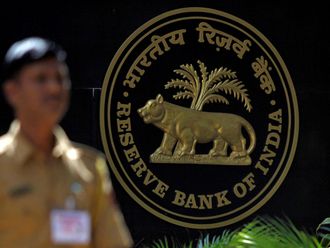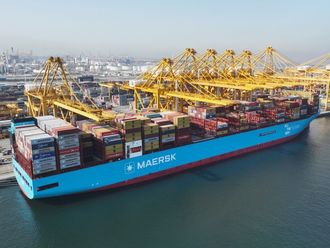Dubai: Brent crude may witness a greater downside if the medium-term supply overhang continues, with the bottom still placed at $45 (Dh165) per barrel, analysts said,
Brent crude, which hit a low of around $45 per barrel in January 2015, recovered to near $70 last month even as its recovery from a six-year low faltered amid speculation that a global glut will persist as rising prices spur US production.
On Tuesday, Brent traded up more than a per cent to be at $65.65.
“Peak demand during the next couple of months will be met with a slowdown into August and September and this leaves the price risk skewed to the downside during the third quarter. I see the medium-term price risk skewed lower, towards $55, but believe we have seen the bottom,” Ole Hansen, head of commodity strategy at Saxo Bank told Gulf News.
Brent has stabilised at $65 during the past month, with traders and investors reluctant to take it higher at this stage given the near-term outlook for rising Opec production.
“Supplies are too high for the market, so the upside in oil would remain limited in the near term. It may even dip below $50 per barrel,” said Pradeep Unni, senior relationship manager, Richcomm Global Services.
Since last November Saudi Arabia and Iraq have raised production by more than one million barrels per day, while US production has slowed, but has still risen by 400,000 barrels per day.
Play safe
“Opec will play it safe and either leave [the] production target unchanged or raise it in acceptance of the fact that production has breached the target for the past year. A cut would lead to a price rally, which could help trigger the increase of US production, so this route is unlikely at this stage,” Hansen said.
However, a rate hike by the US later in the year is fully priced in, analysts say. A stronger dollar makes dollar-priced assets like oil cheaper.
“A rate hike is fully priced in so the impact on the dollar should be limited. Not least considering the recent weakness in economic data which has helped reduce the need for a rate hike at this stage,” Hansen added.
Iranian oil
“The return of Iranian oil is still lurking while the market also keep a close eye on US producers as the price deflation in the industry has sharply reduced break-even levels and made an earlier than expected return of production possible,” Hansen said.
Iran has stored excess crude on tankers for the past two-and-a-half years as tougher restrictions on its oil sales deterred buyers, according to the International Energy Agency (IEA). The country exports between 1 million and 1.1 million barrels of crude per day, down from 2.5 million before the US and European Union added oil sanctions in mid-2012, IEA data showed.
“We are also ignoring the impact of the return of Iranian production. If Iran adds about 1 million barrels of oil per day it would add to the additional selling tone in the market,” Unni added.












